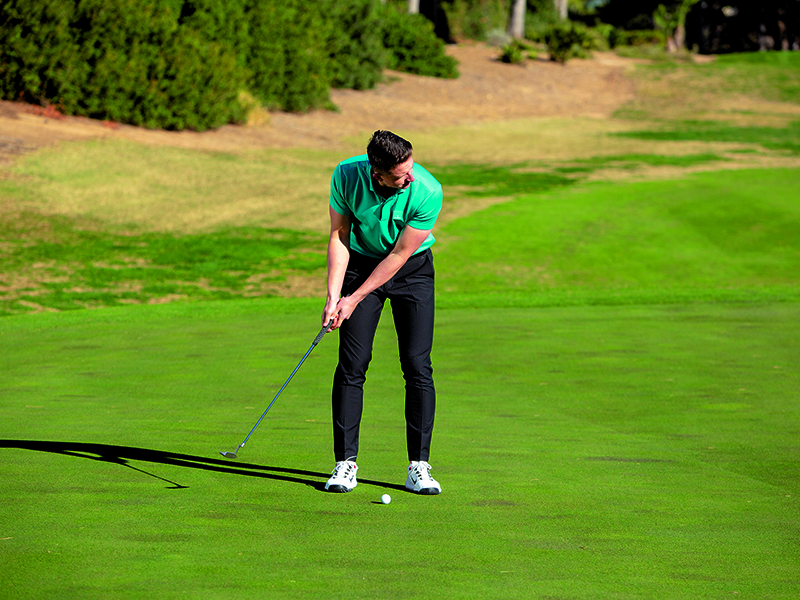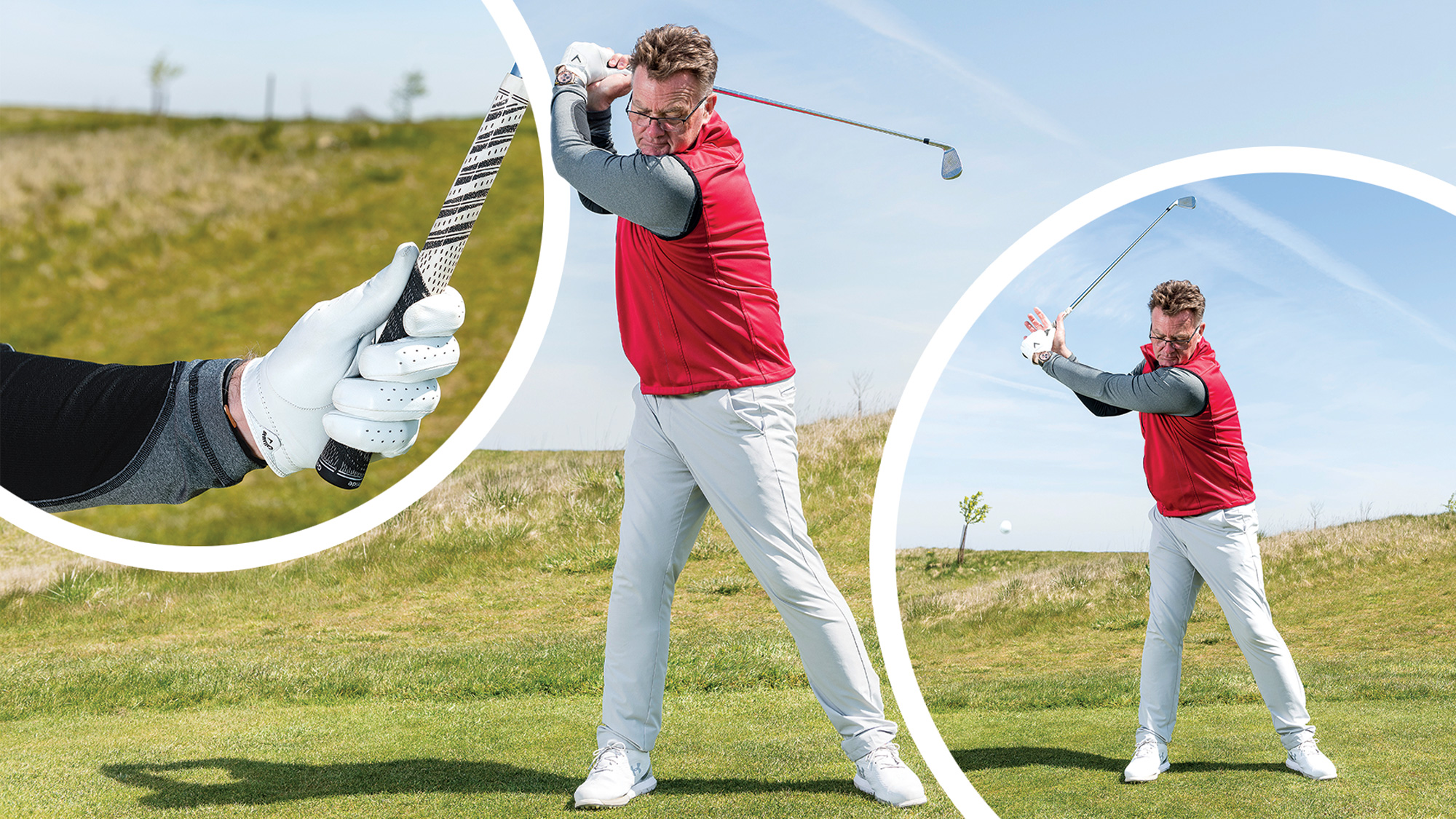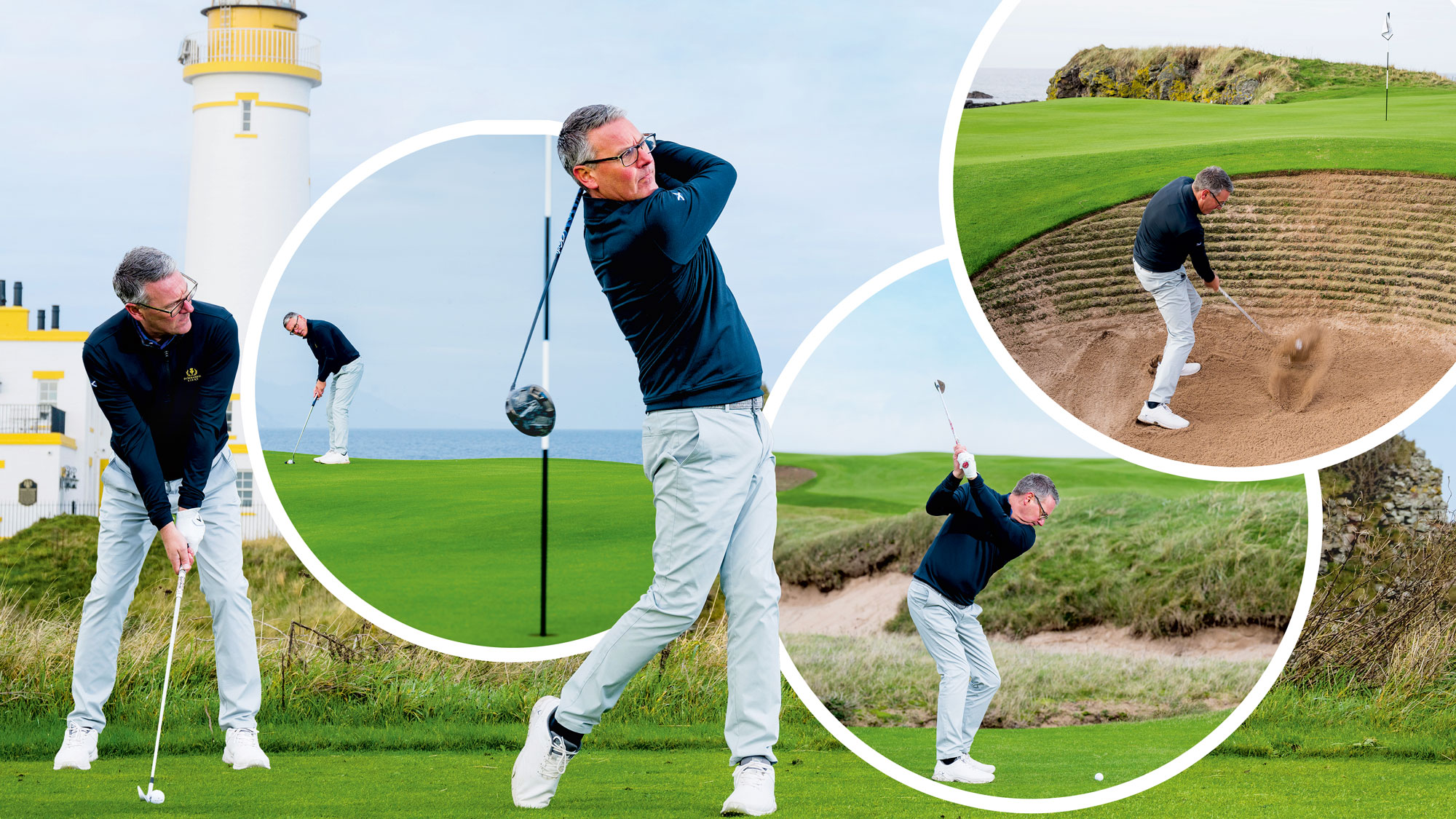Putting Backswing vs Follow Through: How To Create A Reliable Stroke
Understanding the relationship between the backswing and the follow through with a putter is crucial to create a reliable stroke, and our expert can help...


Gary Munro
Many amateur golfers head out onto the course without a secure understanding of the relationship between the backswing and follow through in creating a reliable putting stroke.
As we know all too well, a good round with the putter is often the difference between a good and a bad round, so working on your putting technique as well as your green reading skills is a great investment in your journey for progress.
In this article, Golf Monthly Top 50 Coach Gary Munro shares his advice on creating a repeatable putting stroke that will allow you to shoot lower scores and provides some excellent putting drills to help you on your way...

As Director of Golf at Pitch London, Gary Munro is leading the way in diversifying the game of golf. While he aims to make the game more accessible for a wider audience away from the golf course, he also has an impressive traditional coaching resume. In the past, Gary has overseen a number of league wins as County Manager for Bedfordshire Under 18s, and continues to help golfers of all abilities to improve their game.
The Variables
There are three variables you must get right – you must strike the ball correctly, control swing length and control tempo. In this article, we will focus on the last two.
I’ve set up a putting mat (see image below) with two tees equidistant from the ball. To start, just work on making sure the putter head travels the same distance back and through. If you can match this with the same consistent tempo, the ball should always travel the same distance.

Using a putting mat is a great way to practice both on and off the course
The Technique Drill
For this drill you need three balls and a flat surface. To start, take the putter back to the inside of the right foot and stop at the inside of the left foot. Hit three putts, pace them out and mark down the results.

This simple drill could drastically improve your performances on the greens
Then repeat to the outside of each foot, measure and make a note; then, to one putter head beyond each foot. In future, for any flat putt, you know where your putter needs to travel to achieve the desired distance.
Get the Golf Monthly Newsletter
Subscribe to the Golf Monthly newsletter to stay up to date with all the latest tour news, equipment news, reviews, head-to-heads and buyer’s guides from our team of experienced experts.
The 'Feel' Drill
Now we’ve worked out how far the ball travels with different-length putting strokes, it's time to turn this into a nice 'feel' drill.
On the golf course, as you set up beside your ball, look at your target and just try and rock your shoulders back and forth to get a sense for how much speed you will need to get the ball to the target.

Pace is everything on the green, so spend time working on it before your round
It’s like throwing or rolling a ball, you look at the target and you gauge how far back and through you need to move your arm. This encourages a more instinctive way of putting, improves your visualisation and dictates your swing length. Then, set up to the ball and pull the trigger. You won't be disappointed by the results!

Barry joined Golf Monthly in January 2024, and now leads the instruction section across all platforms including print and digital. Working closely with Golf Monthly's Top 50 Coaches, he aims to curate and share useful tips on every aspect of the game - helping amateurs of all abilities to play better golf. A member at Sand Moor Golf Club in Leeds, he looks forward to getting out on the course at least once a week in the pursuit of a respectable handicap.
Barry is currently playing:
Driver: Benross Delta XT Driver
Hybrid: TaylorMade Stealth 4 Hybrid
Irons: Benross Delta XT 5-PW
Wedges: TaylorMade RAC 60, Callaway Jaws MD5 54
Putter: TaylorMade Spider Tour
- Gary MunroTop 50 Coach
You must confirm your public display name before commenting
Please logout and then login again, you will then be prompted to enter your display name.
-
 How Many Majors Will Masters Champion Rory McIlroy Win In His Career... And Which Is Next?
How Many Majors Will Masters Champion Rory McIlroy Win In His Career... And Which Is Next?Rory McIlroy completed the Career Grand Slam in dramatic fashion at The Masters, but how many Majors could he go on to win in his career (and which comes next)?
By Barry Plummer Published
-
 'You Can't Win Them All If You Don't Win The First' - McIlroy Grand Slam Odds Shorten After Masters Victory
'You Can't Win Them All If You Don't Win The First' - McIlroy Grand Slam Odds Shorten After Masters VictoryMcIlroy completed the Career Grand Slam after winning The Masters, with his odds of claiming the Grand Slam in 2025 slashed after his Green Jacket victory
By Matt Cradock Published
-
 Sandy Lyle Shared 3 Top Tips With Us Prior To Winning The Masters in 1988... And They Could Still Save You Shots 37 Years Later
Sandy Lyle Shared 3 Top Tips With Us Prior To Winning The Masters in 1988... And They Could Still Save You Shots 37 Years LaterThe 1988 Masters Champion shared his expert tips in the January 1988 issue of Golf Monthly, but they are still absolute gems for amateur golfers to this day...
By Barry Plummer Published
-
 Are You More Accurate Than The Average Amateur Golfer? Peter Finch Can Help You Hit More Fairways In 2025
Are You More Accurate Than The Average Amateur Golfer? Peter Finch Can Help You Hit More Fairways In 2025There is no better feeling than striping one down the middle of the fairway, but many amateurs struggle with accuracy. Peter Finch has four pro tips to help...
By Barry Plummer Published
-
 Are You A Victim Of This Destructive Golf Swing Fault? Let Me Help You Fix It Before You Tee It Up This Weekend
Are You A Victim Of This Destructive Golf Swing Fault? Let Me Help You Fix It Before You Tee It Up This WeekendAn overswing in golf is a destructive habit which can cost us precious shots on the golf course, but PGA Pro John Jacobs has a quick fix to get us game ready...
By Barry Plummer Published
-
 Do You Struggle With Distance Off The Tee? Try This Quick Fix To Make 2025 Your Biggest Golf Season Yet
Do You Struggle With Distance Off The Tee? Try This Quick Fix To Make 2025 Your Biggest Golf Season YetStruggling with distance off the tee could be a major reason why your handicap isn't coming down or your scores aren't improving, but our quick fix can help...
By Barry Plummer Published
-
 Seve's 'Lost' Bunker Lesson: Master Slopes And Transform Your Short Game Today
Seve's 'Lost' Bunker Lesson: Master Slopes And Transform Your Short Game TodaySeve's forgotten bunker lesson, from Golf Monthly's August 1983 issue, could hold the secret to better bunker play and supercharging your short game this season
By Barry Plummer Published
-
 Is Your Golf Swing Failing You? This All-Encompassing Drill Can Instantly Save It
Is Your Golf Swing Failing You? This All-Encompassing Drill Can Instantly Save ItAre you struggling with your golf swing? Discover the all-encompassing drill that can fix common swing faults and restore your game. Get back on track today!
By Tom Motley Published
-
 I Attended An Exclusive Tee To Green Masterclass With A Top Golf Coach... Now I'm Sharing His 6 Transformative Tips With You
I Attended An Exclusive Tee To Green Masterclass With A Top Golf Coach... Now I'm Sharing His 6 Transformative Tips With YouFew golfers get the chance to spend an entire day with a top golf coach, which is why I can't keep his six expert tips to myself. Get ready to play better golf!
By Barry Plummer Published
-
 5 Things The Biggest Hitters Do To Generate Power In Their Golf Swing (And How You Can Copy Them)
5 Things The Biggest Hitters Do To Generate Power In Their Golf Swing (And How You Can Copy Them)Generating more power is a great way to improve your handicap and shoot lower scores. So, we analysed the biggest hitters in golf to help you hit it further...
By Barry Plummer Published